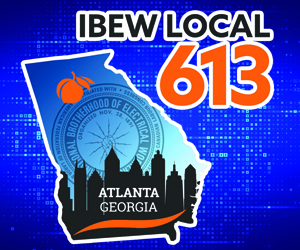
The GHSA’s bi-annual reclassification process approved a proposal to increase the out-of-zone enrollment multiplier from 2.0 to 3.0 on Monday with a final vote of 56 yes and 15 no’s. The multiplier that will be used to tally the FTE/Enrollment of every GHSA member school before the classifications are finalized in the coming months was introduced for the first time two years ago as a remedy to offset the competitive advantage of schools that have out-of-district students enrolled in their schools. Private schools, city schools and various magnet schools are the three groups of schools impacted most by the multiplier, because they have the largest percentage of out of zone enrollment and now each out-of-zone student will be counted as three students.
In the weeks leading up to Monday’s final vote, various debates were made and ideas to stratify the multiplier were among the topics. Central-Carroll Principal Jared Griffis laid out a proposal that would apply a 2.0 multiplier to schools with less than 15 percent out-of-zone students, and then increase it to a 2.5 multiplier for schools with a 15-25 percent out-of-zone total and a 3.0 multiplier to all schools with more than 25 percent out-of-zone students. The private school representatives in the audience strongly opposed Griffis’ proposal and this is just one example of the many different ideas that were debated over the past few weeks. Ultimately, it was determined to have a universal standard that applied to all schools equally and the 3.0 multiplier was voted in. The driving force behind the change was to even the overall playing field and it was argued that there were competitive disadvantages that current structure and 2.0 multiplier did not solve.
“What we have proven over the last two years is that what we’ve done does not work,” said GHSA president Glenn White . “And we’ve had domination by schools in our association, because they’re in certain classes, that did not work.”
Increasing the multiplier to 3.0 also led the GHSA to remove a previous limitation that ruled schools could only jump up two classifications in the bi-annual reclassification process. Without this limitation in place, the multiplier would now allow programs to jump up to Class 7A. Two years ago, Class 7A was formed with the largest 44 enrollments without any multiplier. Now, the multiplier will be universally applied and the classifications will be formed by the weighted enrollment totals after the 3.0 multiplier.
The multiplier has been debated for years and Monday’s decision will certainly not put an end to these disputes. The best example I can give for a school that will be disproportionally impacted by the multiplier is Woodward Academy. When the enrollment numbers were put out before the 2020-22 cycle, the College Park campus had a 1082 FTE/Enrollment with 1030 out-of-zone students The 2.0 multiplier sent Woodward Academy from Class 4A to Class 5A for the past two seasons and increasing that multiplier to 3.0 would result in another jump. Blessed Trinity is very similar with a 970 FTE/Enrollment and a 728 out-of-zone total.
“Two years ago we were wringing our hands about moving the multiplier to 2.0,” said Jim Finch, the principal at Mary Persons High School in Forsyth, who voted for the proposal. “I understand. This is something new. I get it. But that’s where we’re moving on for competitive reasons.”
The new rule could also mean that city schools like Buford (Class 6A), Jefferson (Class 4A), Cartersville and Calhoun (both 5A), who are routinely pointed out as the biggest beneficiaries of out-of-district students — would end up in high classifications. The other higher classification Private schools most likely to move up in a 3.0 multiplier format are Benedictine, Blessed Trinity, Greater Atlanta Christian, Marist, Pace Academy, Lovett, St. Pius, Westminster and Woodward Academy. Carrollton is another city school and head football coach Joey King expressed his concerns about the decision on Monday’s episode of Georgia Prep Sports: Drive For the GHSA State Title HERE.
Once the classifications are set schools will have the option to appeal to compete in a lower classification. Two years ago there were 24 appeals and 17 were approved.
The GSHA is expected to release the new region alignments by January. Those would be in effect for two years starting with the 2022-23 school year.






















































